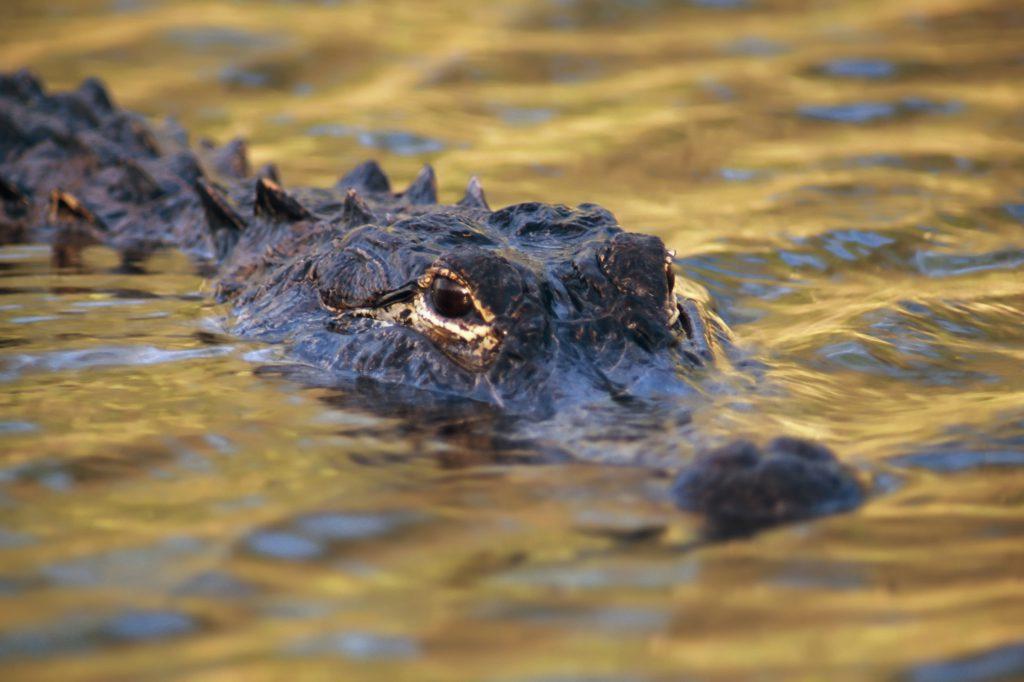
Where can you find rare red wolves, colorful wood ducks, black bears galore, hawks and bald eagles, hundreds of migratory waterfowl - perhaps even a few alligators - all amid unspoiled woodlands and wetlands in a stunning natural setting? Come to Alligator River National Wildlife Refuge at 100 Conservation Way, Manteo, in the NC Outer Banks.
Covering 152,000 acres in all, this magnificent coastal preserve provides protected habitat for a huge array of wildlife, including several endangered species. Plus, it caters to human beings as well, with plenty of opportunities for family-focused R&R - from hiking to hunting, bicycling to birdwatching, fishing to horseback riding, and more.
What Can You Expect to See?
1. All Kinds of Gorgeous Scenery
Wide gravel roads wind throughout the Refuge. As you stroll, hike, or drive along these people-friendly pathways, you'll encounter a variety of landscapes including:
- Lush maritime woodlands - towering cedars, picturesque cypress-gums, bay forests, hardy loblolly pines, coastal shrubbery, etc.
- Grassy brackish and freshwater marshes
- Shimmering lakes, ponds, and pools
- Mixed hardwood swamps
- Managed wetlands, croplands, and more
2. Several Endangered Species
Fond of wild canines? Keep an eye out for purebred red wolves, with their distinctive red-brown-gray coloring.
Once deemed extinct, these beautiful beasts have made a dramatic comeback. In 1987 a small number, bred in captivity, were released into the Refuge. Now about 100 roam wild and free across northeastern North Carolina.
If you spot one, stay at a distance. Red wolves are not known to be dangerous; in fact, they haven't harmed a single human being since their re-establishment at the Refuge. But remember, they're wild, not domesticated, so it's best to be on the safe side. They're also extremely shy - far more frightened of you than you are of them. So, feel free to take photographs, but don't get up close or offer food.
Red wolves are not the only rarity at the Refuge. Endangered red-cockaded woodpeckers also live here year-round. Smaller than most other woodpeckers, these elusive black-and-white birds gather in family groups and nest in holes in living pine trees. They're hard to spot from a distance, so be sure to bring your binoculars and look for their distinctive plumage. Both males and females have gleaming white cheeks. Plus, the males sport red crescent-shaped markings, the source of the "red cockade" name.
3. Birds, Birds, Birds
Love birding? You're in luck. Our fine feathered friends flourish at Alligator River NWR. All year-round, you'll find native species such as:
- Wood Ducks, among America's prettiest waterfowl. Look for males with glistening green and brown feathers and females with dainty white patterns around the eyes. Unlike most ducks, these plucky birds can grip tree bark, perch safely on branches, and nest in holes in trees.
- Owls - including Barred Owls, famous for their loud calls, and Great Horned Owls, a/k/a hoot owls, with their familiar tufted heads.
- Great Blue Herons, elegant shorebirds that thrive along waterways where they feed on frogs and fish.
- Red-Tailed Hawks and other majestic raptors.
- Bob Whites, wild turkeys, and large pileated woodpeckers.
Plus, if you visit between fall and early spring, you may spot some of the many migratory birds that stop here to rest, feed, and nest during their flight along the Atlantic Flyway. Look out for:
- Tundra Swans, large, graceful birds often found in flooded fields.
- Various duck species, including Pintails and American Black Ducks.
- Brightly colored Green-Winged Teals.
- Several gorgeous species of Warbler, including Black-Throated Green Warbler, Prairie Warbler, Swanson's Warbler, and Prothonotary Warbler.
- Indigo Bunting, Blue Grosbeak, and other birds are known for their vivid plumage.
- American Bald Eagles, short-eared owls, hawks, and ospreys.
4. Black Bears
Alligator River National Wildlife Refuge is home to one of the Southeast's largest populations of black bears - between one and two per square mile. So, as you roam the grounds, you may spot a few bears lumbering through the woods.
Don't be alarmed, even if you happen upon a mama with her cubs. Black bears are rarely aggressive toward people. In fact, they're scared of us, and they usually scram when they see us.
Nonetheless, these omnivorous beasts are large, wild, and very powerful. So, if you do see bears in the distance, don't worry, but don't approach them, either, and never offer food! If you're fairly close to the bears (NOT a good idea), stand, stare, spread your arms out wide (so you'll look large and menacing), and make a lot of noise. This should scare the bears away.
Usually, a bear will simply ignore you as it forages for its food (typically nuts, berries, and edible vegetation). Use that opportunity to snap a photo or two. Later you can post the pics to social media and wow your friends and family!
5. Plus Plenty of Additional Critters
You'll discover lots of other fascinating wildlife at Alligator River National Wildlife Refuge, such as:
- 48 species of fish, including prized game and sport fish
- 48 species of reptiles and amphibians (including alligators)
- 40 species of mammals
- All kinds of insects - bring bug spray!
... and yes, a few snakes as well.
All at One Breathtaking Refuge...
... open dawn to dusk year 'round. Experience the natural wonders of the Outer Banks while staying at one of our cozy Outer Banks vacation rentals, providing the perfect retreat after a day of exploring Alligator River National Wildlife Refuge and its diverse wildlife.









